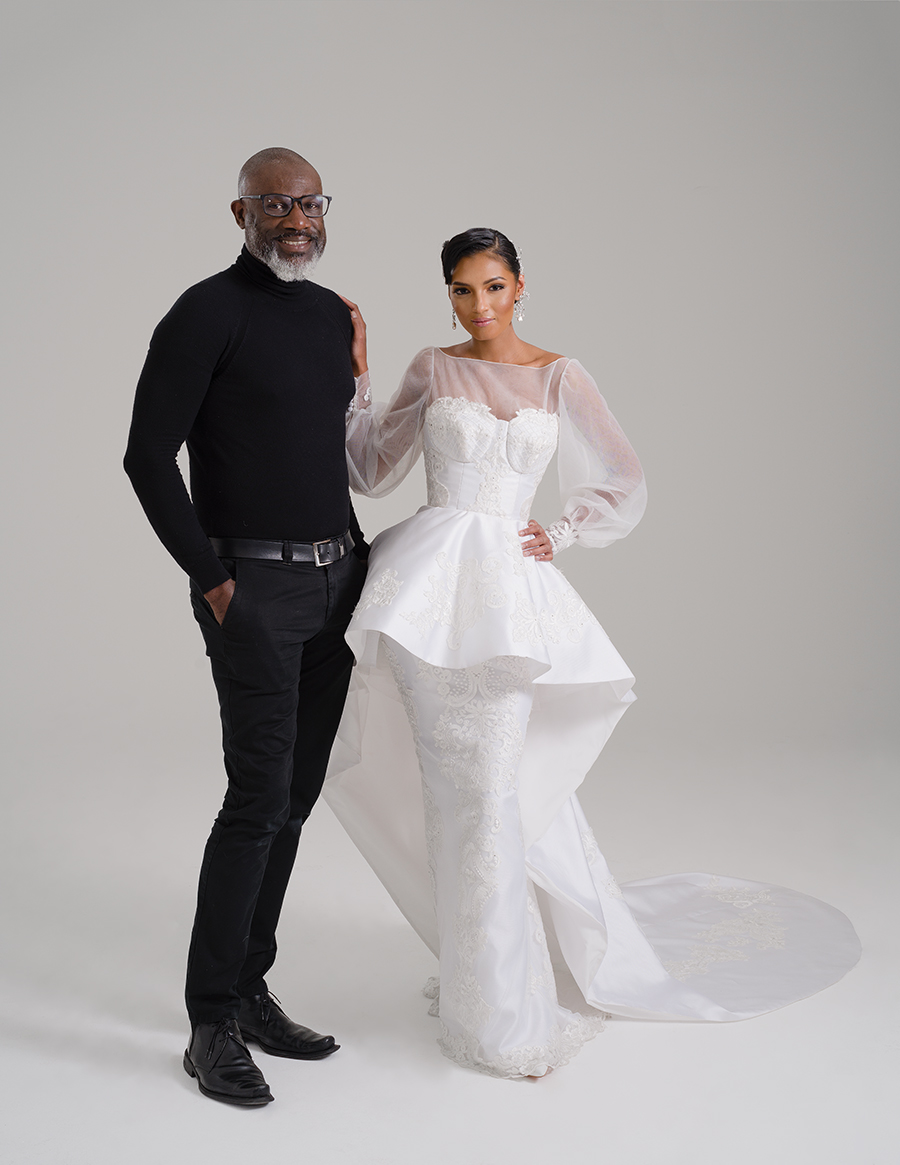
In the Fall 2018 issue of MunaLuchi, we had the pleasure of producing a fashion editorial shoot in tribute to the late Amsale Aberra. The Editorial featured new wedding gown designs by 4 prominent black wedding gown designers. Each designer also had the opportunity to discuss how Amsale has influenced their careers in the fashion industry. Over the next couple of days, we are sharing each designer interview with you, as seen in the Fall 2018 issue. Take some time to get to know these talented designers.
First up is Yemi Osunkoya of Kosibah.
He has been in business for over two decades, and after reading his interview and visiting his gorgeous website, you’ll know why he’s been able to capture the attention of brides for so long.
When did you begin designing wedding dresses?
I began designing wedding dresses that I made myself from scratch in 1991. Previous to that, I’d sketch the design but had to rely on dressmakers to bring my vision to life which was very frustrating for me.
How do you describe your design style?
I would describe my design style as producing figure enhancing classic gowns with clean silhouettes that aim to flatter and celebrate the shape of whomever wears them.
What do you believe are the cornerstone design elements of every wedding gown?
Fit. The gown should fit the bride as perfectly as is possible.
Flattering. The gown should flatter and enhance the figure of the bride.
Statement. The dress should make a statement (quietly or loudly) about the personality of the bride and the fact she is the centre of attraction.
Detail. The gown should have great details.
How do you define the line between gown and wedding gown?
The line between gowns and wedding gowns can be blurred when it comes to extremely simple gowns or destination wedding gowns especially if they are in colours that are not white or Ivory.
Usually the colour (shades from brilliant white to champagne), the detailing of the gown, the quality of the fabrics and embellishments used in its creation, the length of the skirt train, is all what distinguishes a wedding gown from any other type of gown.
Do you remember the first time you saw an Amsale gown?
The first Amsale dress that stood out to me was an Ivory strapless gown with an A line skirt and a pale blue sash draped slightly below the waistline in front and seemed to be tied in a loop slightly lower at the back with the wider ends of the sash sitting on the train of the gown. It was exquisite in its simplicity, and the sash was such a statement of restrained elegance. I absolutely loved it. I’m not sure exactly which year this was or what the gown was called.
Amsale’s design drive was in creating transcending fashion statements. When thinking of fashion that transcends, what immediately comes to mind?
What immediately comes to mind when thinking of design that transcends fashion is a gown a bride can look at 10, 15, 20 years down the line and not feel embarrassed about or look extremely dated.
How do your own designs transcend fashion?
I design specifically for each client for whom I’m creating a couture bridal gown at anytime and I take into consideration lots of factors pertaining to her specific needs with the ultimate aim of creating a gown that will mimic the classical hourglass silhouette. Though I sometimes give a nod to present trends via design elements or fabric choice, I usually design timeless pieces that eventually withstand the passage of time.
Amsale believed that true style is timeless. What design elements do you find to be timeless?
Clean lines, unfussy detailing, restraining oneself from adding too many trends into the design and use of beautiful fabrics and muted embellishments lend themselves to creating timeless and classic gowns.
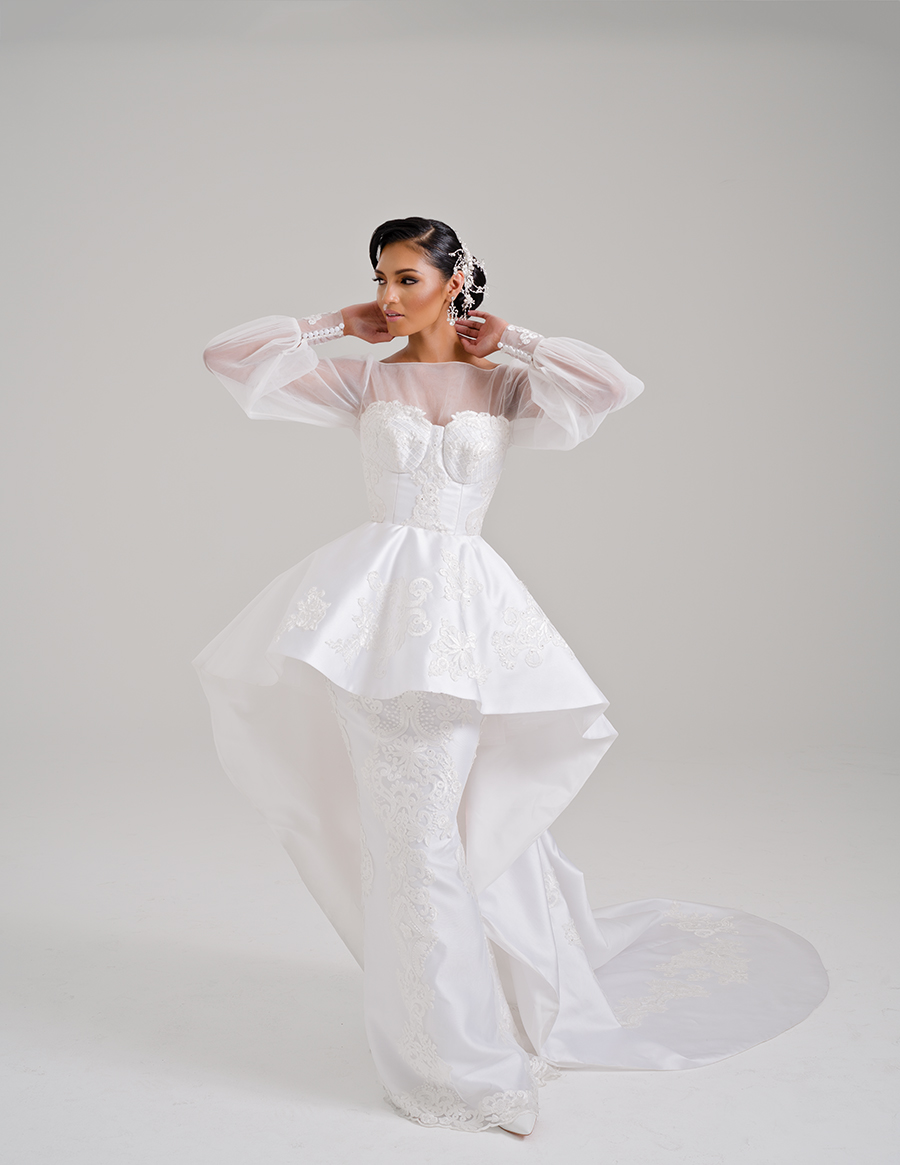
In 1985 Amsale began her journey into the world of fashion with wedding gowns. In a time marked by inflated forms and elaborate details she went against the grain with clean, elegant designs of “quiet impact.” How has your work gone against current trends?
I have always wanted to create beautiful, elegant gowns made with great attention to detail and perfect finishing right from the beginning of my career. I was very influenced by the couture techniques used by designers of the New Look era of the late 1940’s/early 1950’s by designers such as Dior, Givenchy and Balenciaga. I decided to concentrate on design elements developed through clever pattern drafting and manipulation rather than elaborate ruffles or laud/excessive embellishments to create my bridal gowns. I was lucky to be trained in Old School couture techniques, now sadly dying out because of its very time consuming nature, so I’m able to draft patterns taken from over 26 precise body measurements of each client of any design I sketch. I therefore create gowns that may not slavishly tick off current trends but still make an impact on the day, create a figure for the bride that stuns her guests in a good way and have the distinct Kosibah silhouette I have developed and honed over the years.
How do you define “quiet impact?”
I define quiet impact as the gown that makes you mull over how and why exactly it’s elicited a reaction from you rather than the full force whammy of a laud, over the top or avant garde gown.
How has Amsale directly or indirectly influenced and inspired you and your own work?
I was influenced positively by Amsale at a time when I almost began to doubt my design aesthetic of restrained elegance and thought perhaps I ought to push the boat and create over the top designs or gowns with exaggerated design elements which I could force myself to do, but her designs reassured me that I could indeed farrow my own design path in the safe knowledge that the Kosibah bride out there will seek me for the gowns I produce that remain true to my personal design style.
Amsale’s first step into the industry came out of necessity. How has necessity shaped your own path?
I on the other hand, had always wanted to be a fashion designer. I had a talent for sketching dresses and human figures from a very early age which was fortunately encouraged and nurtured by my parents and Art teachers. Because of the labour intensive and time consuming process involved in creating gowns the way I was trained, I realised that to be able to charge what I deserved, only formal and bridal gowns would be viable to produce from a business point of view. That realization and the fact my designs lent themselves to elegance, grace and spotlight, bridal and special occasion wear was a natural progression for me.
What do you love most about an Amsale design?
What I love most about an Amsale design is its timelessness, deceptive simplicity and exquisite finishing.
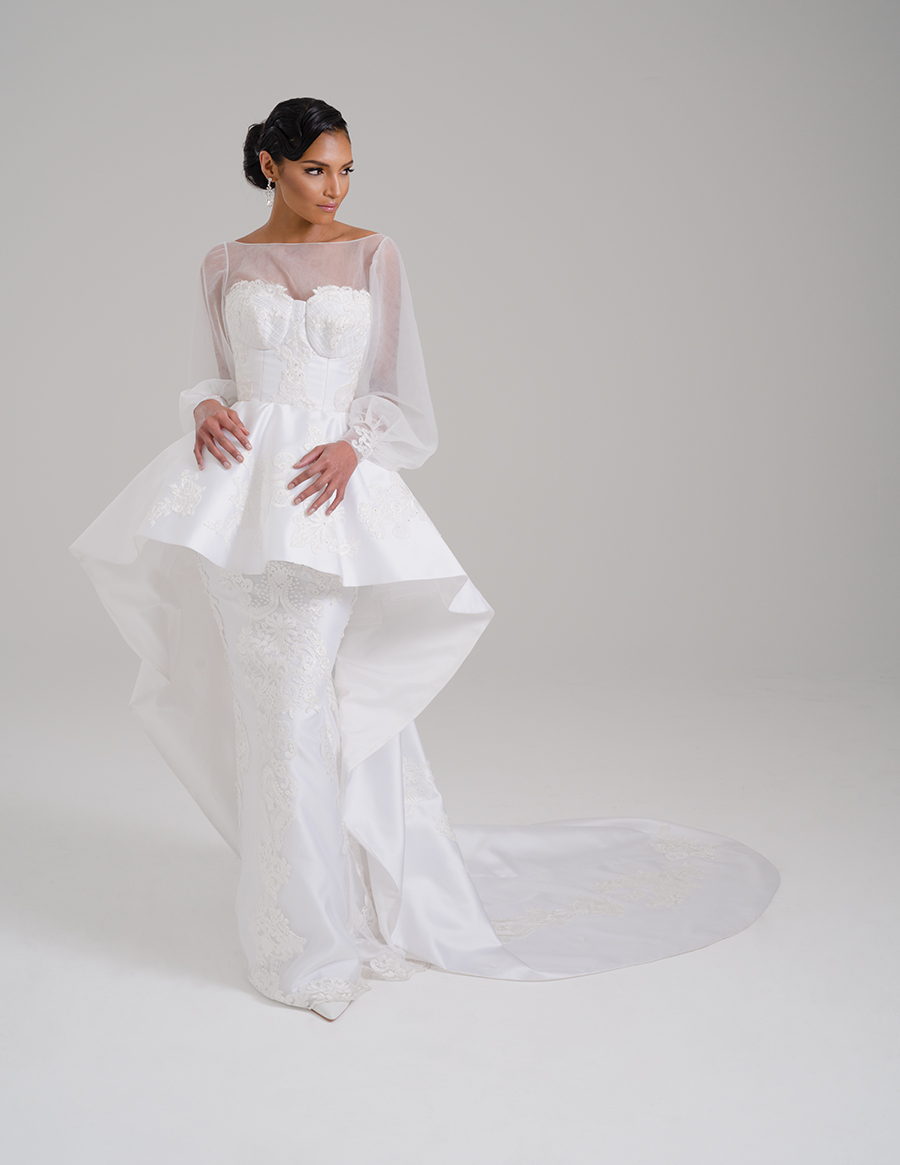
To learn more about Yemi, visit his website at www.kosibah.com.
Read the complete story in the Fall 2018 issue of MunaLuchi Bride magazine. Purchase your limited edition foldout cover copy here!
Creative Team:
Photography: In His Image Photography
Assistant Photography: Nana Annan
Hair: Hair by Sadiku
Hair: Glamour by Shaniqua
Makeup: Brides by Melanie B
Makeup: Juicy Looks by Abby
Earrings: Headpiece Heaven
Styling: James R. Sanders
Cinematography: Yamean Studios





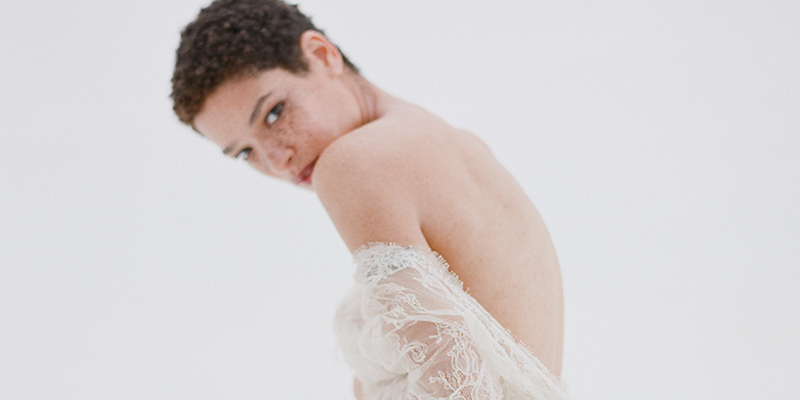
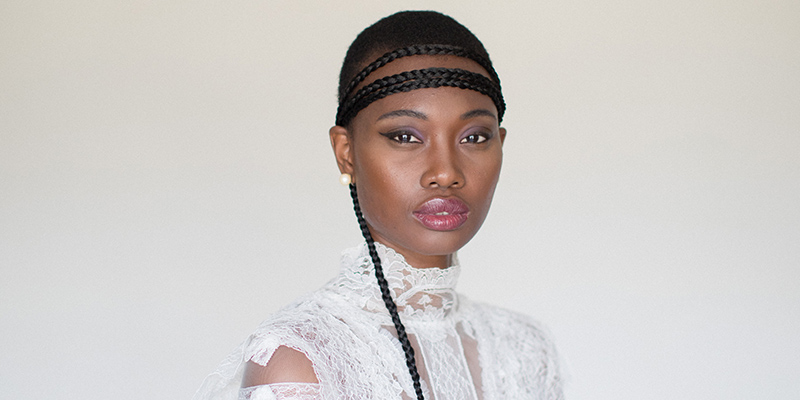
Leave a Reply